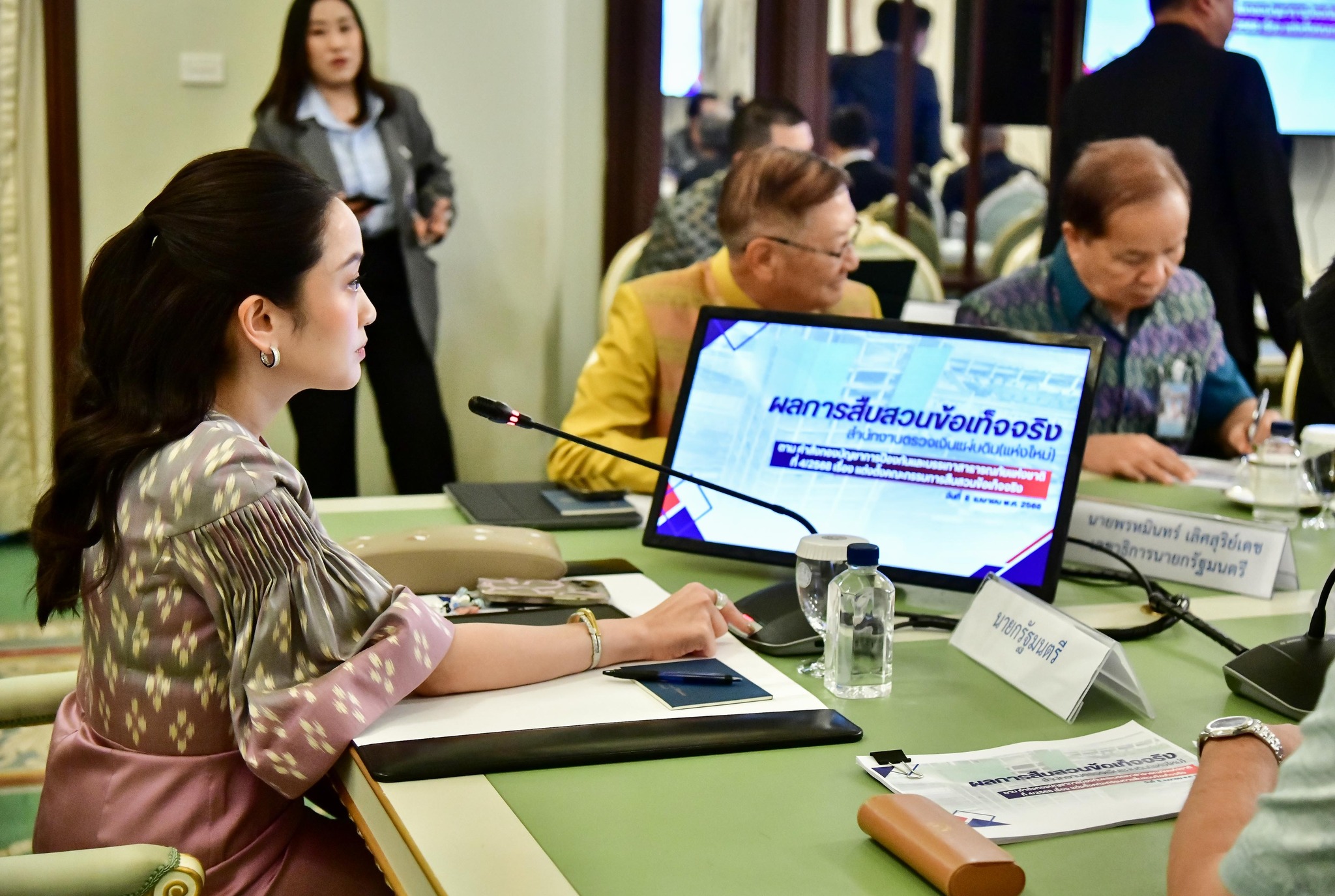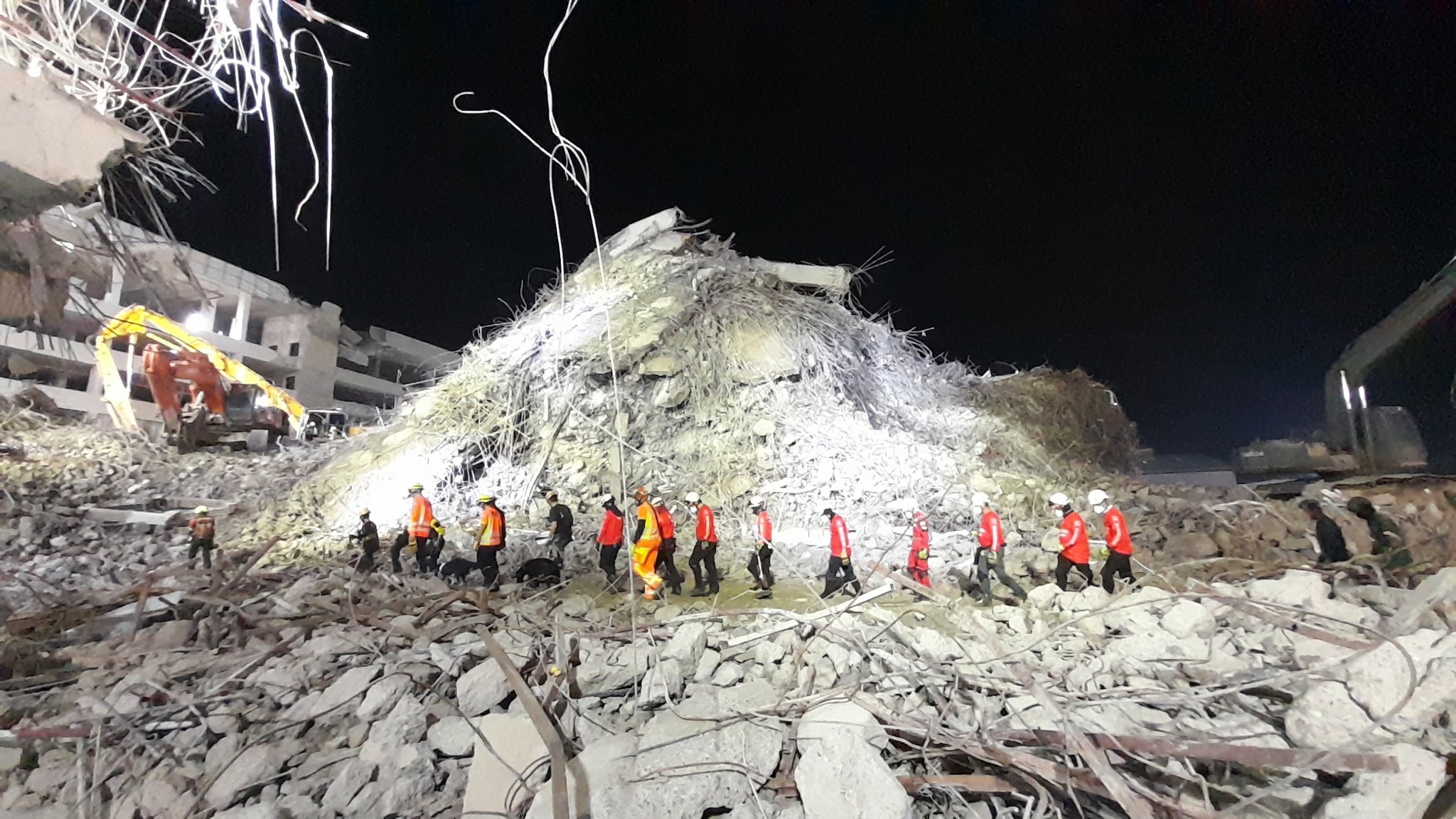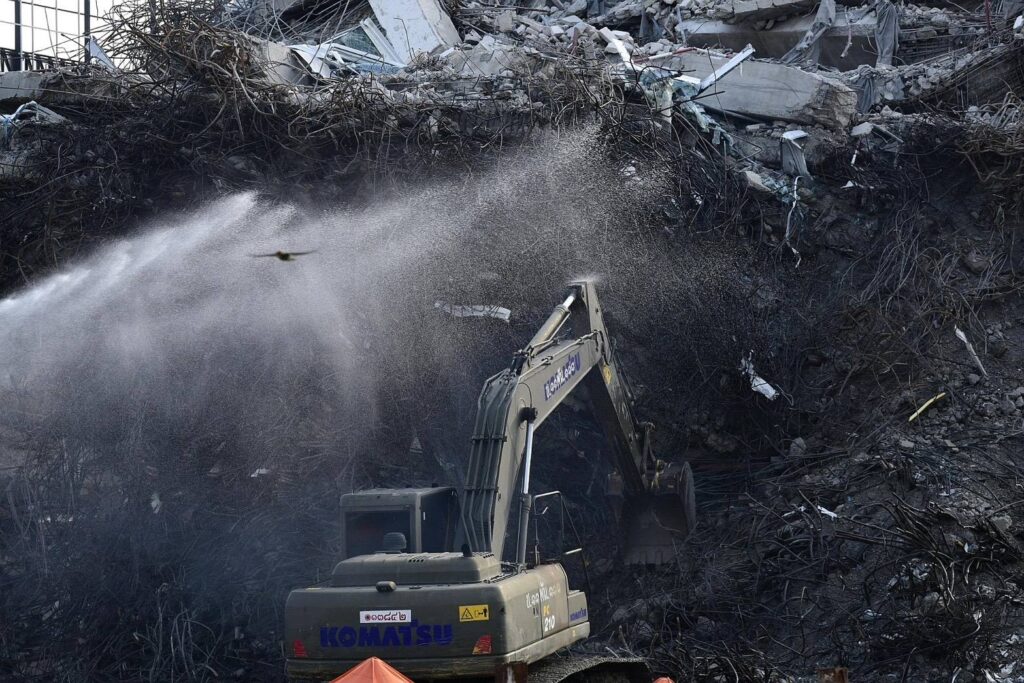PM orders an additional investigation using modelling to confirm the actual causes of the building collapse in Chatuchak, which has so far caused over 20 deaths and 70 more missing
Prime Minister Paetongtarn Shinawatra has instructed the Department of Disaster Prevention and Mitigation (DDPM) as well as the other four academic institutions specialising in engineering today to run models separately to reveal and cross-check each other to provide evidence and proof of the actual causes of the collapse of the State Audit Office building in Chatuchak following the major 7.7 magnitude earthquake that struck the capital hard on March 28.
The SAO building is the only one that collapsed during the earthquake, prompting speculation about possible irregularities in its construction work, which is under the responsibility of ITD-CREC, a joint venture of SEC-listed Italian-Thai Development Plc and China Railway Number 10 (Thailand).
“It is the only building that collapsed (during the earthquake). So, we brought it to the table to see what went wrong with it, and we have speculated on many points. They are critical, from the start through the construction process,” said PM Paetongtarn.

The PM’s latest order follows the initial probe into the case led by the deputy PM and Interior Minister Anutin Charnvirakul, who was given the deadline of 7 days since her first order last week. (Read: PM orders major revamp on disaster preparedness in response to public discontent)
The result of the probe was not disclosed to the public, but PM Paetongtarn said materials used in the collapsed building were among the prime suspects. However, other factors need to be further investigated and verified, and that’s the reason why she wants the independent institutions to help run the models.
The institutions and the DDPM are given 90 days to wrap the task, she said, citing the decision is based on scientific recommendations by the experts. PM Paetongtarn added that if any irregularities or wrongdoings involving the case surface during this period, concerned authorities can pursue them with their legal enforcement.
The PM has also affirmed that a lobby in the case will not be allowed. She and her ministers are not ok with the practice, as this is a big issue in the country. So far, she has not been in talks with the ITD either, adding that she will do so only if needed, referring to a possible discussion if it involves the construction process.
At the same time, she has instructed concerned agencies to review building permits and building inspections to improve the practices for handling earthquakes in the future.

The State Audit Office building
The 30-storey under-construction building was first expected by the State Audit Office to be the face of the country, but it had collapsed almost immediately following the major earthquake on March 28.
So far, it is the only building that has completely collapsed in the country, and earthquake experts said it has made a new record of being the tallest high-rise building that is located farthest from the epicenter of an earthquake but collapsed as a result.
Since its collapse, investigators have been investigating the actual causes of it, but so far have not reached any conclusions. The Department of Special Investigation (DSI) has been instructed to look into possible irregularities of its construction process, and last week the department established three main issues for its investigation.


The first is the possible use of nominees in the China Railway Number 10 (Thailand), which will hence breach the law governing foreign ownership in certain businesses, including construction. The second is the use of possibly flawed or substandard materials. Last but not least is the possible bid rigging in state procurements.
According to DSI’s Director-General Pol. Maj. Yutthana Praedam, the DSI is now focusing its investigation on the first issue as it has initially found some irregularities concerning the shareholding of the company. There are three Thais, who have held shares combining together at 51% according to Thai law, and a Chinese company, China Railway No.10 Engineering Group Co., Ltd. (CREC No.10), which is the largest shareholder of the company.
The three Thais have been found to have weak financial backgrounds, including low monthly income, whereas they have transferred shares between them. One of them has only three shares left in the company. All have disappeared since, with locations unknown until now.
The China Railway Number 10 (Thailand), meanwhile, has also been found to be a joint venture with 10 other Thai companies, which altogether have obtained 28 state contracts, worth over Bt 13,424 million.

CREC No.10
As checked by Bangkok Tribune, CREC No.10, which is its largest shareholder, has also joined the ITD as a joint venture, ITD-CREC No.10, which has won the state contract to build the 30km section of the 250 km Thai-Chinese high-speed railway system, Phase 1: Bangkok–Nakhon Ratchasima Section. It’s worth around BT 9,349 million.
The project is part of the Bangkok-Nong Khai High Speed Railway Development project, which is in congruence with China’s Belt and Road Initiative (BRI), under the official cooperation between Thailand and China.
CREC No.10 also has a business connection with China Railway Group Limited (CREC), China’s super-large state enterprise, which claims to have been listed among Fortune Global 500 for 17 consecutive years. In 2022, it said it was ranked 34th on the Fortune Global 500 list, and 5th among China’s top 500 enterprises.
According to its business structure, CREC No.10 is a subsidiary of CREC’s Infrastructure Construction unit. Under the same unit, there are several other China Railway Engineering Groups with Numbers tagged. Apart from the infrastructure construction unit, CREC also has units concerning engineering design and consulting, overseas projects, equipment manufacturing, featured properties, mineral resources development, finance and trending, asset management, and other types.
As noted in its introduction on its official website, CREC, which is based in Beijing, was set up in late 2007 by the China Railway Engineering Corporation (CRECG), which is the defunct General Bureau of Capital Construction under China’s Ministry of Railways. CRECG is now under the Steering Committee for Large Centrally Administered State-owned Enterprise, and has the State-owned Assets Supervision and Administration Commission of the State Council (SASAC) as its funder.
In late 2017, CREC was transformed from a company to “a wholly funded state-owned enterprise” and renamed China Railway Engineering Co., Ltd. Currently, CREC has a staff of about 290,000, including 85,000 skilled technicians and one academician of the Chinese Academy of Engineering (CAE), of whom more than 2,400 hold senior professional titles, according to its website.
It also claims to have enjoyed a good reputation in the global market, saying that since the construction of the 1,861-kilometre Tanzania-Zambia Railway in the 1970s, the company has successively built a large number of excellent projects in Asia, Africa, Europe, South America and the Atlantic. At present, it has representative offices and carries out projects in more than 90 countries and regions around the world, the company said.

This is in contrast to several reports, including the World Bank’s, which in 2019 imposed a two-year debarment against China Railway First Group Co., Ltd. (CRFG), one of CREC’s subsidiaries, in connection with “fraudulent practices” under the Dasu Hydropower Stage I Project in Pakistan.
According to the World Bank, the project was designed to facilitate the expansion of the electricity supply of hydropower in Pakistan. The facts of the case, as cited by the World Bank, show CRFG engaged in “multiple misrepresentations” during the bidding process for four contracts – two of which it won in 2015 – including failing to disclose subcontracted work, a subcontractor and an agent it used in bidding for one of the contracts. These are “fraudulent practices” under World Bank Group Procurement Guidelines, the World Bank noted.
“The debarment makes CRFG ineligible to bid on future World Bank Group-financed projects for the period of the debarment. It is part of a settlement agreement under which the company acknowledges responsibility for the underlying sanctionable practices and agrees to meet specified corporate compliance conditions as a condition for release from debarment,” said the World Bank in its announcement.
Chinese Embassy of Bangkok, meanwhile, has issued an official warning against what it calls “false statements” about the embattled project on social media. The embassy said there have been false statements disseminated on social media recently, and they are not the same versions of the statements released by the embassy. It has therefore asked social media users to quote the embassy correctly.
The embassy said the Chinese counterpart has supported the investigation and legal enforcement against wrongdoers. China Railway Number 10 (Thailand) has also been cooperating in the investigation, it noted.
As reported by the Bangkok Metropolitan Administration (BMA) today, 73 workers are still missing at the construction site, whereas only 21 bodies have been recovered so far.
Indie • in-depth online news agency
to “bridge the gap” and “connect the dots” with critical and constructive minds on development and environmental policies in Thailand and the Mekong region; to deliver meaningful messages and create the big picture critical to public understanding and decision-making, thus truly being the public’s critical voice


